This is our last monthly roundup before Ending Age-Related Diseases 2020, our first fully online conference, and plenty of rejuvenation research has been conducted this month. Let’s take a look at what’s happened in July.
LEAF News
Ending Age-Related Diseases 2020 July Update: Our annual conference, Ending Age-Related Diseases: Investment Prospects & Advances in Research, will be held on August 20-21! Free tickets, regular tickets, and VIP tickets are all available for this online event. Secure your ticket now!
Lifespan News
 Lifespan.io Launches Lifespan News: In this premier episode of Lifespan News, Brent Nally discusses a lot of the rejuvenation topics we’ve covered, including the fact that naked mole rats, which are strange-looking but very long-lived rodents, are resistant to cancer.
Lifespan.io Launches Lifespan News: In this premier episode of Lifespan News, Brent Nally discusses a lot of the rejuvenation topics we’ve covered, including the fact that naked mole rats, which are strange-looking but very long-lived rodents, are resistant to cancer.
Parkinson’s Symptoms Reversed in Mice: The Lancet is opening a new journal entirely focused on longevity, and Brent discusses this along with plenty of other rejuvenation topics.
Interviews
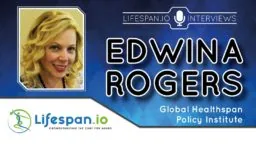 Principles of Effective Advocacy for Longevity Therapies: Edwina Rogers, CEO of the Global Healthspan Policy Institute, discusses public policy and her role in bringing government institutions towards a more pro-rejuvenation line of thinking.
Principles of Effective Advocacy for Longevity Therapies: Edwina Rogers, CEO of the Global Healthspan Policy Institute, discusses public policy and her role in bringing government institutions towards a more pro-rejuvenation line of thinking.
A New Hallmark of Aging Proposed: Alexander Fedintsev promotes the idea that the stiffening of the extracellular matrix, which is caused by cross-linked collagen, is its own hallmark of aging.
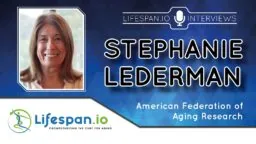 Stephanie Lederman Discusses AFAR and Funding: Promoting basic research through grants, AFAR seeks to encourage young researchers to focus on the diseases and root causes of aging.
Stephanie Lederman Discusses AFAR and Funding: Promoting basic research through grants, AFAR seeks to encourage young researchers to focus on the diseases and root causes of aging.
Are Epigenetic Clocks Ready for Prime Time?: Reason of Repair Biotechnologies discusses potential problems with the use of epigenetic clocks to measure biological age.
Rejuvenation Roundup Podcast
Ryan O’Shea of Future Grind hosts this month’s podcast, showcasing the events and research discussed here.
Research Roundup
Two Proteins Allow LDL Cholesterol into Our Cells: Identifying NPC1 and NPC2, the two proteins that allow the transition of LDL into our cells, has ramifications for treating heart disease.
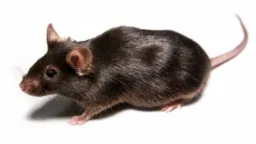 Frailty and Age-Related Immune Decline Reversed in Mice: Eosinophils resident in belly fat have been shown to be instrumental in maintaining and restoring the balance of the immune system, and restoring them has been shown to improve vaccination response.
Frailty and Age-Related Immune Decline Reversed in Mice: Eosinophils resident in belly fat have been shown to be instrumental in maintaining and restoring the balance of the immune system, and restoring them has been shown to improve vaccination response.
Selectivity of the Blood-Brain Barrier Changes with Age: Lipid-mediated transport increases with age while receptor-mediated transport decreases, affecting the proteins that reach our brains from our blood plasma.
 Trimethylamine May Be Involved in Vascular Aging: Bacteria in the gut break down proteins in red meat and other foods, releasing trimethylamine, which promotes aging of the vascular system.
Trimethylamine May Be Involved in Vascular Aging: Bacteria in the gut break down proteins in red meat and other foods, releasing trimethylamine, which promotes aging of the vascular system.
A Blood Factor Boosts Neurogenesis and Cognition: While some blood factors lead to aging, others promote regeneration and growth; the enzyme Gpld1 is one of those factors.
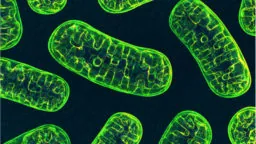 The First Precision Gene Editing Tool for Mitochondrial DNA: CRISPR/Cas9 is the wrong tool for the job when it comes to mitochondria; a different enzyme, DddA, appears to be the right one.
The First Precision Gene Editing Tool for Mitochondrial DNA: CRISPR/Cas9 is the wrong tool for the job when it comes to mitochondria; a different enzyme, DddA, appears to be the right one.
Hyperbaric Oxygen Therapy May Reduce Age-Related Cognitive Decline: A pressurized room filled with pure oxygen has been shown to reduce the effects of dementia.
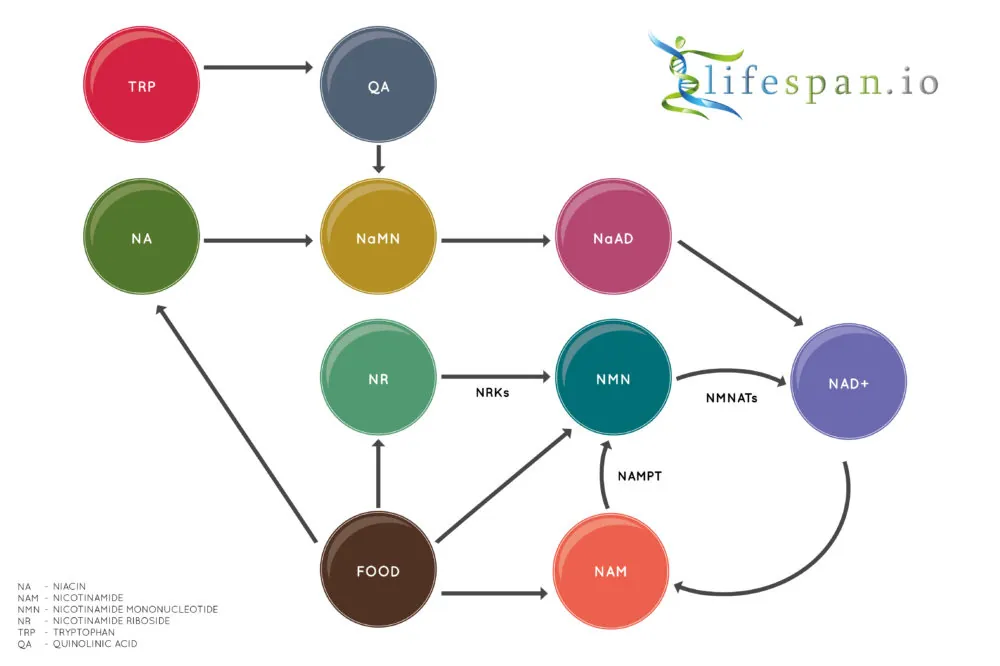
Why NAD+ Declines During Aging – Part 1: In Part 1 of a two-part series, Steve Hill explains why the coenzyme NAD+ decreases as we age.
 A DNA Methylation Clock to Measure Skin Age: The skin is the largest and most accessible part of the body, so it is ideal as a target for measuring biological age.
A DNA Methylation Clock to Measure Skin Age: The skin is the largest and most accessible part of the body, so it is ideal as a target for measuring biological age.
A Single Molecule Can Regenerate the Gut Lining: Neuregulin 1 has been shown to cause the gut lining to regrow itself after injury, offering new hope for chemotherapy patients and people whose linings have been deteriorated by aging.
 Scientists Induce a New Mode of Aging in Yeast: Yeast is one of the simplest organisms in aging research, and it ages in two modes: mitochondrial dysfunction or the deterioration of the nucleolus. Researchers have induced a third mode that delays both of these fates.
Scientists Induce a New Mode of Aging in Yeast: Yeast is one of the simplest organisms in aging research, and it ages in two modes: mitochondrial dysfunction or the deterioration of the nucleolus. Researchers have induced a third mode that delays both of these fates.
The “Love Hormone” Oxytocin as a Potential Alzheimer’s Therapy: Oxytocin takeup by cellular receptors has been shown to ameliorate the deterioration caused by amyloid beta, making this naturally occurring hormone potentially useful as a therapy.
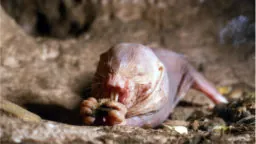 Senescent Cell Death Promotes Aging Resistance in Naked Mole Rats: Apoptosis, the natural self-destruction of aged, senescent cells, is upregulated in these particularly long-lived rodents, which explains their unusual longevity.
Senescent Cell Death Promotes Aging Resistance in Naked Mole Rats: Apoptosis, the natural self-destruction of aged, senescent cells, is upregulated in these particularly long-lived rodents, which explains their unusual longevity.
Glucosamine Supplementation Correlates With Reduced All-Cause Mortality: A longitudinal study has shown that supplementation with glucosamine is correlated with reduced mortality by 15%.
Senolytic Drugs: From Discovery to Translation: This review, published in the Journal of Internal Medicine, discusses the current state of senolytics, drugs that destroy harmful senescent cells.
Navitoclax (ABT263) clears senescent osteoarthritic chondrocytes in osteoarthritis: Removing the senescent cells present in osteoarthritis reduces inflammation and promotes the growth of cartilage.
Late-life restoration of mitochondrial function reverses cardiac dysfunction in old mice: Targeting mitochondrial dysfunction through reducing oxidative stress has been shown to restore heart function in a mouse model.
Exosomes derived from human umbilical cord MSCs rejuvenate aged MSCs: Exosomes, vehicles of intercellular communication, have been shown to deliver signals that restore the function of aged mesenchymal stem cells.

 Repetitions in Our DNA React to Anti-Aging Interventions: Unneeded repetitions in our DNA tend to accumulate with age and are associated with age-related diseases, but they have been shown to be affected by caloric restriction.
Repetitions in Our DNA React to Anti-Aging Interventions: Unneeded repetitions in our DNA tend to accumulate with age and are associated with age-related diseases, but they have been shown to be affected by caloric restriction.
Genomic Instability May Directly Lead to Diseases of Aging: Our cells naturally mutate, even outside of the germ line, and these mutations can lead to more than just cancer.
A decade of epigenetic change in aging twins: Genetic and environmental contributions to longitudinal DNA methylation: Twin studies are a staple of medical research, and this study compares the differences of genetics and environment in respect to DNA methylation.
Genetics of extreme human longevity to guide drug discovery for healthy ageing: By analyzing the genes of people who live for unusually long periods, it may be possible to develop drugs that promote the same longevity.
Genetic variation between long-lived versus short-lived bats illuminates the molecular signatures of longevity: Studying the differences between short-lived and long-lived bats has led to the discovery of the genes that promote longevity in these animals.
Beaver and Naked Mole Rat Genomes Reveal Common Paths to Longevity: Identifying the specific, mutual genome mutations between these two long-lived rodent species has led to a new understanding of the genes that give them their longevity.
Multivariate genomic scan implicates novel loci and haem metabolism in human ageing: Researchers have identified 78 genes linked to aging and have implicated heme, which consists of hemoglobin and other compounds, as a potential factor.
Changes in ferrous iron and glutathione promote ferroptosis and frailty in aging Caenorhabditis elegans: Iron metabolism has also been shown to affect the aging of these commonly researched worms.
Comparison of mitochondrial transplantation by using a stamp-type multineedle injector and platelet-rich plasma therapy for hair aging: Pep-1-mediated mitochondrial transplantation and platelet-rich plasma therapy are roughly equivalent in their ability to restore the hair of aging mice.
Growth differentiation factor 15 protects against the aging-mediated systemic inflammatory response in humans and mice: This particular factor has been shown to reduce inflammaging, the systemic inflammation that accompanies aging and promotes multiple age-related diseases.








